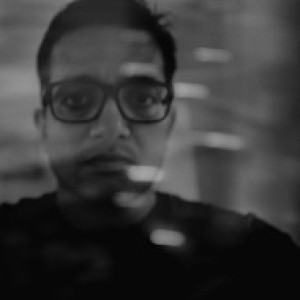Food and thought...
... from a Wednesday morning.
Delhi 6 was interesting. I was told that it was one of those rare Indian movies that was able to weave 'Magic realism' into the art of storytelling. That was enough to encourage me to watch it. It is much criticized and acclaimed as well. The interesting thing is that criticism is not always in direct response to a movie (especially for ones off the beaten track) but to the applause for it. And vice-versa.
I particularly liked the allegorical Kaala Bandar (Black monkey) which ran through the movie. It is based on the true story of the "Monkey Man", an alleged creature who defied exact description and wreaked havoc on the residents of Delhi and its outskirts in the middle of 2001. This "creature" found its way repeatedly into the news for creating mayhem by attacking people. The media participated wholeheartedly in the circus and it got a bit out of proportion.
This film explores collective hysteria, from social and psychological standpoints. It depicts a society behind the walls of Old Delhi that is steeped in religious and other forms of dogma. Old grandmothers pray to a Tulsi tree and believe everything is going to be fine whilst refusing to do anything about what might be wrong. Neighbours welcome a new resident with open arms, shower him with instant "love" and a sense of belonging. There is much religious unity and things are largely happy until the Monkey man arrives. And as rumours go, fuelled by an imaginative mob, the creature becomes real. Gradually, it gets translated into communal hatred as debates begin about Monkey man's religious affiliations! Just as thoughtlessly as "love" is bestowed upon neighbours, hatred fills the streets. People turn against one another, become bitter, spiteful and even on the verge of committing murder and torching temples.
Though repercussions shown here are extreme, history will bear testimony to such events. The idea of representing God through an idol is often a way of limiting a much larger idea that may not be immediately fathomable by the human consciousness. It was the very same way with Monkey man. Man needed to give a concrete shape to his idea of "evil." The creature became a symbol of man's inner fears and his fear of confronting himself. It became a witness to his inability to reason and think independently. It also showed how man often looks for avenues to shirk away from responsibility by finding everything else to blame. In an urgency to give a physical shape to what is essentially abstract, there is an oversimplification which replaces our need delve within ourselves for answers.
So many of the elderly here are insulated from reason and having lost their childish curiosity to know and experience, become bitter. The seeds are sown at a much younger age in a refusal to acknowledge that perhaps we might be wrong, perhaps there might be another way of looking at a situation, and things that seem contradictory on the surface might have a way to coexist. Yesterday evening, we were watching an interview of Cherie Blair who is in India working for her foundation. She spoke with equanimity and intelligence, wasn't unduly defensive or forceful about making her points, appeared to be thinking her answers through instead of repeating from memory and showed an almost girlish sense of humour.
Not many Indians her age would sound as inspired. And much of the reasons for this are subtly (and not so subtly) highlighted in the movie.
- 2
- 0
- Nikon D90
- f/4.5
- 50mm
- 200

Comments
Sign in or get an account to comment.


